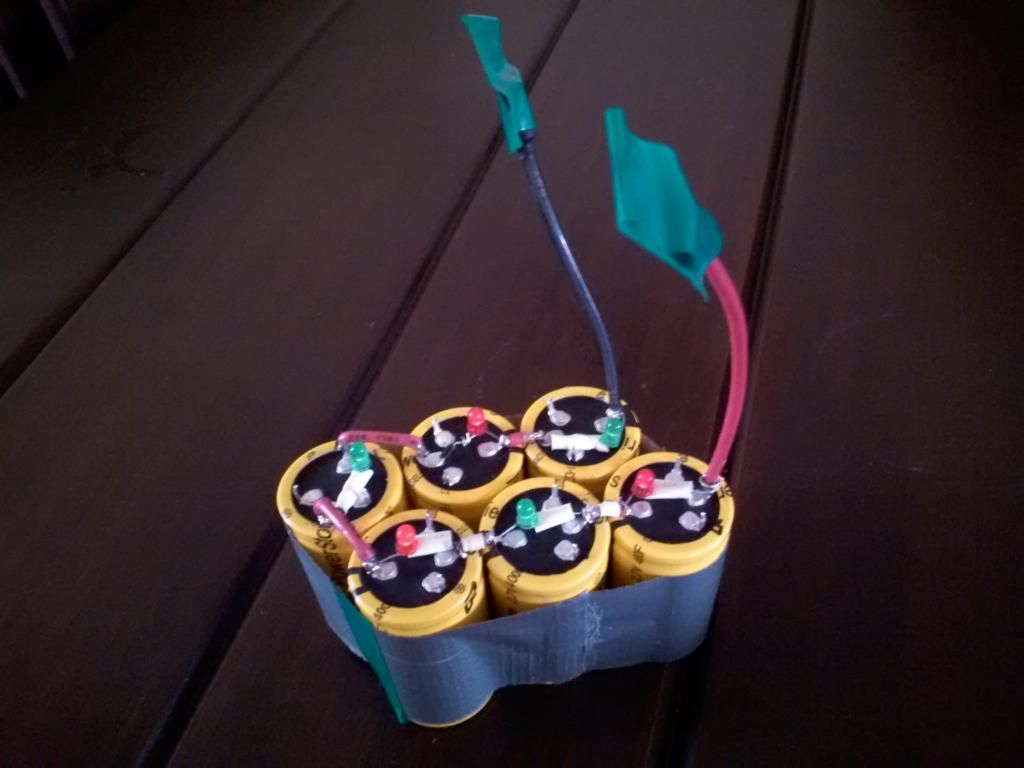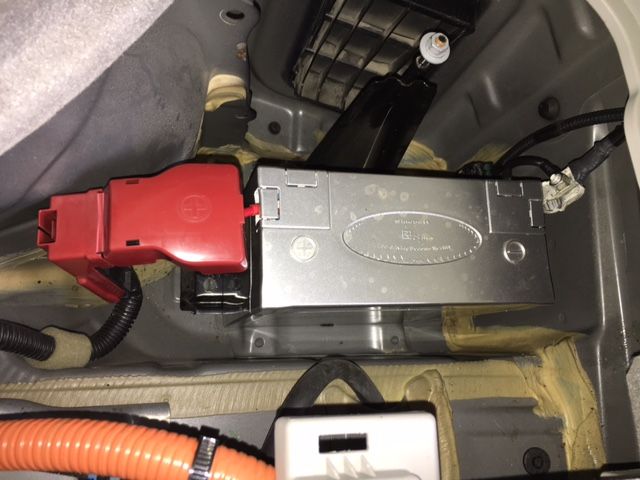A while back I bought a "12v"
LiFePO4 battery ($130 shipped) to experiment with and eventually replace the 12v battery in the Prius. It lived in my jetski all summer, faithfully starting the old boat without issue. Since my PiP is a 2012, I figured it might be a long time before the 12v battery needed to be replaced.
Due to a
musty smell caused by water infiltration, my wife decided to leave the doors open while the car was parked in the garage, and I was away on business. Needless to say, after 5 days, there was no sign of life when I went to "start" it.
I don't have a proper battery charger since I have supercapacitors to supply a jump for other vehicles.

Instead I used an linear DC power supply, with the voltage set at 13, and the current maxed at 5A, connected to the "jump" terminals on the Prius.


*** SKIP THE BORING DETAILS IF YOU WANT ***
After a few minutes of charging, the voltage was at 10v, so I decided to try plugging in the EVSE charger for the traction battery, knowing that it should also charge the 12v battery. Instead, I heard relays clicking on and off as the car attempted to draw more power than could be delivered. I had to disconnect the linear power supply to get the relay clicking noise to cease.
Next, I resumed charging the 12v battery, and went to place the car in ready mode, knowing that the traction battery would charge the 12v battery once everything booted up. I forgot that opening the driver door causes the brake booster motor to run, and that was more than the battery and power supply could handle. Again, I got strange noises coming from under the hood as it continued to struggle with insufficient power. I had to disconnect the power supply again to get this to cease.
After that, I wised up and went through the passenger door to hit the power button twice, thinking that would put the car in ready mode and charge the 12v battery. The car booted up ok, so I figured it was charging. In hindsight, I don't think the traction battery actually engages in this mode (you have to press the brake pedal when hitting start), so when I came back half an hour later, I found the car unresponsive again.
Finally, I decided I wouldn't try to resurect the 12v battery, so I charged just enough to operate the doorlocks and open the hatch so I could access the battery.
*** END OF BORING DETAILS ***
Keeping the linear power supply attached to the jump terminal on the Prius (to preserve settings, trip meter, etc), I removed the nearly dead 12v battery and replaced it with the LiFePO (lithium iron phosphate). It's rated at 20 aH, which I believe is roughtly half the capacity of the OEM. Even though it's half the capacity, LiFePO4 batteries can be discharged to roughly 30% remaining capacity without causing damage, while the OEM lead-acid battery would be damaged by that deep of a discharge.
So far the LiFePO4 battery is performing just fine, and as a bonus, it's 22 lbs lighter than the original (OEM = 29 lbs, LiFEPO4 = 6.6 lbs). Venting is not required for this chemistry.
I used a wooden block to act as a spacer since the battery is physically smaller than the original. This allowed me to use the retention bracket that held the OEM battery in place. I also had to fabricate short lead wires to adapt the power cables from the car to the terminals on the battery. Here I just used 10 AWG wire and soldered ring terminals.
My ultimate plan someday is to compare the charge efficiency of lead acid batteries to LiFePO4. As lead acid batteries near full charge, their efficiency at accepting charge plummets, dropping below 50%. More than half the energy can be lost as heat. LiFePO4 has much better charge efficiency near full charge, and I want to compare them by discharging 10%, and then measuring how much energy it takes to bring them back to full charge. This might simulate what happens in our car every time we "start" it.
